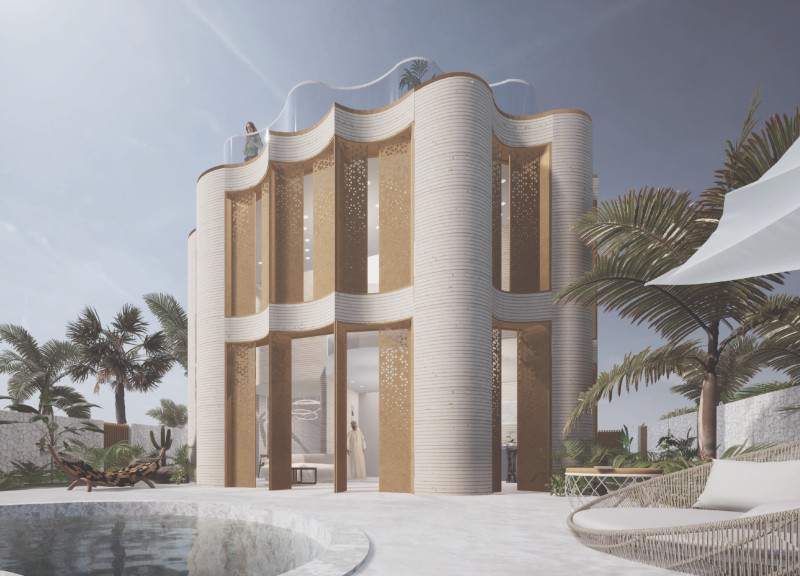5 key facts about this project
In its essence, the project represents a forward-thinking approach to architecture that prioritizes sustainability and community engagement. The building’s primary function is to serve as a multi-purpose space, catering to various community activities while allowing for adaptability. Thoughtful layout decisions enable a fluid transition between different areas, ensuring that each section of the building can be utilized effectively without compromising the overall experience. The design accommodates large gatherings, intimate meetings, and everything in between, showcasing versatility as one of its key features.
The careful selection of materials underscores a commitment to sustainable architecture. The project incorporates reinforced concrete for its structural components, ensuring durability and longevity. This choice not only meets practical requirements but also supports the architectural vision of a robust yet unobtrusive presence within the landscape. Large expanses of glass are employed strategically throughout the design to foster a connection with the outdoors, allowing natural light to permeate the interior spaces while providing remarkable views of the natural environment. This transparency encourages users to engage with the outside world, emphasizing the relationship between the building and its site.
Wood, specifically sustainably sourced timber, has been integrated into various elements within the project. It lends warmth and texture to the interiors, creating a welcoming atmosphere. Used as cladding and within structural components, the wood enhances the visual appeal while promoting a sense of comfort. Additionally, steel is incorporated into the framework, facilitating a clean and modern aesthetic that supports the building’s overall structural integrity without overwhelming its design language.
The design has also been shaped by an understanding of climatic conditions, which informs strategies for passive heating and cooling. Incorporating elements such as overhangs and shading devices allows for optimal daylighting while mitigating unwanted heat gain. This climate-responsive approach further supports the project’s sustainability goals and contributes to a lower environmental footprint, demonstrating a thoughtful balance between architecture and ecology.
Unique design approaches manifest in the seamless integration of indoor and outdoor spaces. Courtyards and landscaped areas are interspersed throughout the project, offering serene outdoor retreats that encourage social interactions and community gatherings. The thoughtful landscaping invites biodiversity, promoting an ecosystem that enhances the site’s ecological value. Additionally, the project features innovative elements such as green roofs or vertical gardens, which contribute to sustainable practices while enhancing aesthetic appeal and promoting biodiversity.
Every aspect of the project has been designed with the intention of fostering community connections. Flexible spaces that can adapt to various events and activities are central to this vision, encouraging a sense of ownership and engagement among local residents. The architecture embodies principles of inclusivity and accessibility, ensuring that the space is welcoming to all individuals regardless of their background or ability.
In summary, this architectural project stands as an exemplar of how thoughtful design can enhance both functionality and community interaction. The careful consideration of materiality, climate responsiveness, and spatial organization come together to create a harmonious environment that serves its purpose effectively. Readers interested in exploring the nuances of this project are encouraged to review the architectural plans, sections, and designs for a deeper understanding of how these elements contribute to its overall success. The architectural ideas embodied in this project reflect a commitment not only to modern design principles but to the community and environment it serves.


























